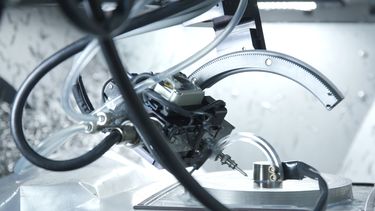Non-destructive machining damage detection using X-rays
On-machine inspection of near-surface defects in manufactured components.

We are actively seeking feedback from manufacturers and the manufacturing supply chain across different sectors to support the development of bespoke on-machine hardware. Trials are available - please get in touch if you have a component which is currently validated through destructive methods.
Background
The surface integrity of a manufactured component has a significant impact on the functional performance and expected fatigue life in service. The aerospace industry standard approach for the detection of defects such as white layers and plastic deformation in the near-surface is cross-sectional microscopy, which is inherently destructive and time-consuming due to the numerous processing steps involved.
Solution
Our patented solution utilises X-ray diffraction to detect and size defect layers such as white layers, deformed layers and grinding burn in manufactured components. This non-destructive alternative offers rapid inspection with results in a matter of minutes and with the potential for on-machine surface integrity inspection.
Benefits
- Non-destructive inspection of near-surface manufacturing defects.
- Inspection can be performed on-machine.
- Inspection times of under 1 minute are achievable.
- Offers a quantitative result which requires no inspector interpretation, unlike microscopy which introduces inconsistencies due to subjectivity.
- Applicable to any materials with a regular crystal lattice e.g. metallic alloys.
- Can be used to inspect real engineering components of varying complexity, for example a nickel-based superalloy gas turbine disc.
- Compatible with a Zero Defect vision for manufacturing in which feedback control drives defect generation to zero, unlike microscopy which can only be performed away from the manufacturing operation.
Intellectual Property
- Patent granted in the US - US11815477B2.
- Patent pending in Europe [EP3963320A1], Canada [CA3135684A1] and Singapore [SG11202111005VA].
